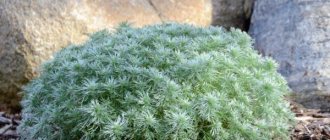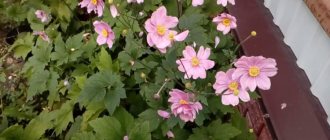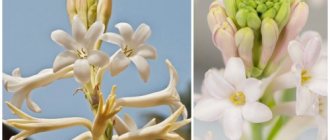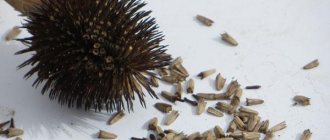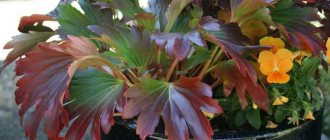Author: Natalya Category: Garden plants Published: June 21, 2018Republished: February 21, 2019Last edits: November 4, 2020
- Growing conditions
- Pyracantha angustifolia
Pyracantha (lat. Pyracantha) is a genus of evergreen thorny shrubs of the Rosaceae family, common in Southeast Asia and southern Europe. The name of the genus comes from two Greek words meaning “fire” and “thorn,” that is, the word pyracantha can be translated as “fiery thorn” or “thorny plant with fiery red fruits.” There are six or seven species in the genus. Pyracantha is grown as an ornamental plant that does not have winter hardiness: only some hybrid varieties of pyracantha can withstand cold temperatures down to -20 ºC.
Where to plant pyracantha
It is better to plant pyracanthus not in the open sun, but so that during the hottest hours of the afternoon, it is in partial shade. If this rule is neglected, its leaves may turn yellow.
Do not plant in lowlands, try to choose a place closer to buildings (preferably residential) and place them on the south side.
| Boarding time | early spring |
| Landing technology | into a hole 2 times larger than the diameter of the root ball. Mix the soil from the pit with a bucket of compost |
| Care | Cover young growth with spruce branches or a layer of dry leaves for the winter |
Correct bush formation
At the beginning of spring, sanitary pruning of pyracantha should be carried out annually. The remaining berries are removed first, and then the branches that grow in the wrong direction.
Some of the shoots are cut off after the flowering period of the bush, and in the summer you can trim off the overgrown young growth.
Important! Due to the presence of thorns, pyracanthus must be trimmed carefully using gloves and long-handled pruners.
An old pyracantha bush can be rejuvenated by pruning shoots at a height of 30-35 cm. Trimming the bush is a necessity; it grows quickly and may lose its decorative appearance.
What can threaten pyracantha?
The plant has many enemies, the most dangerous of which are late blight and the special pyracantha scab. Of the pests, the greatest threat is posed by aphids, a dozen species of caterpillars and the same number of insects. The good news is that there are special drugs to combat them. For example, the bioinsecticide Fitoverm or the chemical product Aktara.
All pyracanthas can “stand up for themselves” - to protect themselves from those who want to pinch their leaves, they have spines up to 2.5 cm long. A cat, let alone a person, cannot get through a pyracantha fence.
Pests and diseases
Pyracantha gets sick very rarely, and is almost not affected by pests. Sometimes, however, aphids can be found on it. This happens when the plant is weakened by improper conditions or poor care. Do not wait for the aphids to multiply or infect the plant with some virus; immediately treat the bush with an insecticide.
Pyracantha is also affected by bacterial burn, which cannot be cured, so when purchasing seedlings, give preference to the variety that is most resistant to this disease. Pyracantha may become ill with fungal diseases such as late blight or scab, and this will also be caused by poor care or unsuitable conditions for the plant. The causative agent of the disease can be destroyed with a solution of Fundazol or another fungicide with a similar effect.
Pyracantha angustifolia
The natural habitat of Pyrakanta angustifolia is the southwestern provinces of China. In comfortable conditions, the shrub is evergreen and covered with white flowers in spring. At the end of autumn, bright orange berries appear on it, which can remain on the branches until mid-winter.
The shrub is beautiful both in splendid isolation and planted in a group, where it still continues to stand out. Gardeners in Western countries often use pyracanthus to create hedges.
Botanical description
Pyracanthas are spreading or upright growing shrubs, reaching a height of 6 m and externally resembling some types of cotoneaster. Pyracantha shoots are covered with long, sparsely spaced spines and evergreen, toothed leaves. The white flowers are collected in corymbose inflorescences, and the fruits are small berry-like apples, colored yellow or red. Because of its fruits, Pyracanthus was previously classified as a subfamily of Appleaceae, but then it was moved to Spiraeaceae.
The value of pyracantha as an ornamental plant lies in its abundant flowering and equally abundant fruiting. Pyracantha berries attract birds, and the flowers densely covering the bush attract bees.
Pyracantha bright red
Wild red pyracantha shrubs (Pyrakanta coccinea) are found in southern Europe, Asia Minor and the Caucasus. They are evergreen, reach 3 m in height and 5 m in width and are ideal for artistic pruning and decorative landscaping. In spring, pyracantha is strewn with hundreds of snow-white flowers, and almost all winter it is decorated with coral-red berries. In autumn, the leaves may change color to bright red.
The plant is famous for its drought resistance (but develops worse in dry soil), loves light and is undemanding to the soil, even if the area where the pyracantha is planted has calcareous soil.
The Pyrakanta Red Column variety is popular among sellers and buyers.
The frost resistance zone of bright red and narrow-leaved pyracantha is 5-8 (temperature not lower than –25⁰C). Even after freezing, plants can quickly restore their crown and bloom in the same year.
Reproduction
Pyracantha is easily propagated in two ways - by cuttings and by seed. Depending on the number of methods required, one or the other is used.
Seeds
Pyracantha is propagated by seed in spring or late autumn. The seeds are first stratified by keeping the material in a cold place for several weeks. The resulting seeds can be planted in open ground, or by first growing seedlings.
To obtain seedlings, the required number of containers with substrate are prepared in early spring. For sowing, it is necessary to use fresh seeds, since the shelf life of the seed is short. The seeds are carefully distributed over the surface of the damp soil. To increase the speed of emergence of seedlings, the containers are covered with film. The prepared mixtures are placed in a bright and warm place. After germination, the containers are opened. Seedlings need regular watering and spraying.
In the spring, after the end of frost, young shoots are planted in a permanent habitat. As a rule, flowering of seedlings is observed only after several years of active growth.
Cuttings
To preserve the maternal characteristics of the plant, it is necessary to propagate the shrub using cuttings. To do this, use green cuttings of the plant that appeared on the bush in early spring. Cuttings are cut from trees, leaving several shoots on the branches. The length of the cuttings should be about 30 cm. The resulting seedlings are cut off from the bottom of the foliage, then placed in a container with a solution to stimulate rhizome growth. You can also plant seedlings in a sand mixture. To speed up the emergence of shoots, the cuttings are covered with caps. After new foliage or rhizomes appear, the bushes can be planted in open ground. However, experienced gardeners advise keeping the plant in greenhouse conditions for at least a year after planting. This prevents the young crop from freezing in winter.
Shrubs can also be propagated using layering. To do this, plant branches that bend toward the ground are buried in the grooves. The tops of the stems should remain uncovered. After which the plants are provided with regular watering. After roots appear on the cuttings, they can be separated from the mother plant and replanted in a permanent habitat.
Indoor pyracantha bonsai
It is not easy to form a tree in a bowl from a gigantic bush, but if you do, you may have a real family heirloom. Give it a try, because even if it is not a bonsai, the plant still needs a lot of pruning.
You need to be especially delicate with indoor specimens when moving them into the garden in the spring. Sissies can suffer even with a short-term nighttime drop in temperature to –5-10⁰С. To avoid this trouble, they need to arrange a dormant season (cold wintering), coinciding with the time of natural winter. To do this, the plant must be moved to a room with a temperature from –2 to 8⁰C.
Do not torment pyracanthus with frequent transplants, because She only needs them once every four years. In this case, you need to carefully handle the roots. Even minor damage to them can lead to severe delays in development, and more severe interference can lead to the death of the plant. It is better to carefully transfer the tree into a large pot and add fresh soil.
Mr. Summer Resident informs: growing pyracantha at home using the bonsai technique
When growing a crop using the bonsai technique, the characteristics of the shrub are taken into account. Young shoots can be:
- intertwine, make braids out of them;
- trim the bark and tie to each other to form a thick trunk;
- The adult shoots are cut through and the young shoots are pulled into them.
The shoots become flexible an hour after watering. Pyracantha is given in a wide variety of shapes. The bush is able to “remember” its geometry. Pyracantha becomes a decoration for the winter garden, home, apartment and office.
At home, the plant needs to be provided with lighting in the dark season and regular ventilation. It is important to maintain regular but moderate watering. Fertilizing is applied no more than once a year by sprinkling. Fertilizers are diluted according to instructions, then the volume of water is doubled. It is better to plant the bush immediately in a large container; it does not like transplanting.
“Plant” pyracantha on the wall
If you see a pyracantha growing up a wall, it can easily be mistaken for a climbing plant. But this impression is deceptive. If you plant it near a fence or against a wall, do not expect it to entangle the hedge or climb up the structure like ivy. In fact, for vertical gardening, its elastic and not at all climbing shoots will have to be directed and fixed on supports, as is the case with climbing roses. In the future they will continue to grow in the indicated direction. After this, you just need to trim off the branches that grow “chaotically”.
Pyracantha in landscape design
Pyracantha is quite popular among gardeners due to its lush, long-lasting flowering and spectacular berries. This shrub is suitable for a hedge because it looks very impressive and grows quite densely, and it also has thorns that will not let uninvited guests through. Even in the middle of winter, the fruits and foliage do not lose their rich color; therefore, such a shrub is perfect for decorating various buildings and walls, but you must remember that the shoots should be guided along the support and secured, since they will not do this on their own. Despite this, this crop is an ideal option for vertical gardening.
This shrub can be grown in small groups or as a single plant. It is suitable for decorating borders, decorating rocky hills, and also for creating a background for mixed borders. This plant has the unusual property of remembering its position relative to the support. So, if the support is removed, the bush will retain its usual shape. This shrub is often used to form bonsai; it looks very impressive as a tree with several or one stem or in the form of a cascade.
Wintering pyracantha and all the attendant troubles
The risk of an experiment in your climate zone may well be justified, because even pyracanthas frozen to the level of snow cover are quickly restored and begin to grow actively.
In the spring, to speed up the growth of shoots, get rid of all frozen shoots during formative pruning. The procedure must be completed before sap flow begins. Putting the pruning shears aside, cover the cuts with garden varnish so as not to lose the plant.
Shoots that thicken the crown should be cut again in mid-summer. There is no need to cut them out completely; it is enough to shorten the young growth, which in any case will not ripen until winter and will freeze. Plants that have been living with you for many years and have not been trimmed for a long time should be rejuvenated. In this case, you need to delete all old branches. Trimmed shoots can be rooted, because the shrub reproduces well by cuttings.
Be prepared to tell curious neighbors that pyracantha is not cherry plum. No matter how much you would like to try or add pyracantha berries to hot tea, you should not do this. They are not poisonous, but absolutely tasteless. But they are the ones who give the bush its decorative appearance, so it would be a shame if such beauty had to be covered for the winter. Although both varieties are recognized as sufficiently winter-hardy for the middle zone, shrubs with orange fruits have the most positive reviews.
Disease resistance
Pyracantha has good immunity and is rarely susceptible to disease. Aphids may appear on a bush if the rules of care are violated.
Among the diseases, a bacterial burn is possible; it is practically not curable. There are varieties of pyracantha that are not susceptible to this disease.
If scab or late blight appears, the branches can be sprayed with a fungicidal agent. In the future, you should properly care for the plant, observing the requirements.
Pyracantha is used in landscape design as a hedge or a single decoration. If you plant a bush near a wall, it can be twisted along a pre-installed support in the form of a lattice.
Care and growing conditions for pyracanthus
Pyracantha is an unpretentious plant. It is easy to grow, as it easily acclimatizes under certain planting and care conditions. Make sure that the perennial is planted on rocky soil. Avoid lowlands where moisture stagnates and sunny places. The firethorn plant does best in partial shade. Direct sun causes burns and the foliage turns yellow (if large areas are affected, it falls off). But there are also more resistant varieties - read about them above. If these conditions are met, we can say that we have done half the work, the rest is small.
Reproduction of pyracantha
There are three ways to propagate pyracantha. The first is in the spring with seeds. Use purchased planting material. It can be collected from existing bushes. The seeds are stored in berries, and in winter they are stratified at low temperatures. Sow seeds in spring, as soon as the soil warms up.
Please note that this method of propagation does not preserve parental properties, and pyracantha will bloom only after 3-4 years
The second method of propagation is cuttings. Young, non-flowering shoots are used. They are rooted in the substrate and then transplanted to a permanent place in the garden. The third is by layering. This process is no different from those needed when propagating other shrubs, for example, lilac.
Types and varieties.
Only two types of crops are cultivated on the territory of our country; let’s look at them in a little more detail.
"Narrow-leaved"
This species of “Pyracantha” came to our country from the territories of Southwestern China. The plant stretches up to four meters, in accordance with the characteristics of Pyracantha, it is an evergreen shrub, the bark of the branches is covered with thin thorns. The leaves are narrow and elongated, about five centimeters from edge to edge. The shape is obovate or oblong, the apex is acute-angled. The upper edge of the leaf plate comes in two types: serrated or solid. Young foliage is covered with the softest pile, which disappears as it matures and the outer side becomes smooth, while the back retains a smoky edge. The racemose inflorescence consists of snow-white flowers with a diameter of eighty millimeters. At the end of the flowering period, fruits of the same size and bright orange color form and ripen. The species has high frost resistance.
The most popular varieties of narrow-leaved pyracantha: Orange Glow and Golden Charmer, let's look at them in a little more detail.
— A relatively tall bush, Orange Glow, stretches up to two and a half meters, the plant density is not dense. The leaf blades are the usual green color; if the crop is grown in regions with warm winters, then the foliage does not fall off, but remains throughout the year. The flowering period begins in late spring and ends with the formation of sunny orange oval-shaped fruits.
— For lovers of fast-growing plants, the Golden Charmer variety is suitable. This is a three-meter bush with characteristic stems bent in an arc. The flowering period, like that of Orange Glow, is in May; the plant is covered with a carpet of snow-white flowers, seated on corymbose inflorescences. The fruits of Golden Charmer reach one centimeter in diameter and are orange in color. This variety is ideal for growing in urban conditions; it tolerates city air, frost and drought well.
Pyracantha angustifolia CKSchneid.
Bright red pyracantha is a guest from Asia Minor and southern Europe. The plant loves open areas, such as fields or light forests. The bush is quite voluminous, the branches are spreading and the lower branches are spread over the surface of the soil. Angustifolia CKSchneid stretches up to 2 meters. The leaves are smooth, the surface is leathery, the size is 4 cm from edge to edge, the shape of an elongated ellipse. The foliage changes color depending on the season of the year; in summer it is swamp green, in autumn it is burgundy red. The flowers come in two colors, lemon pink and white. The orange-red, spherical fruits reach six centimeters in length. This type of pyracantha tolerates drought well; it practically cannot withstand cold, so it needs additional protection for the winter period. The apples of this shrub are edible and are also a source of food for birds.
Popular types:
1. Three-meter handsome Red Column. We are very fond of gardeners because during the flowering period the plant is covered with many umbrella-shaped snow-white inflorescences. And after the flowers fade, the bush is covered with bright red tiny apples.
2. A bush that remains green for only half a year, Red Cushion, its length is 2 meters. Dense and straight branches with burgundy-red fruits.
3. Sharlakhovaya and Gorodchataya species that are grown only in greenhouses, since in most of the Russian regions they will not be able to survive the winter.
Growing using cuttings
Pyracantha can also be propagated by cuttings.
This technique allows you to preserve all the maternal characteristics of the plant.
The upper parts of the branches remaining from pruning in the summer can also be rooted.
The strongest and healthiest stems are selected from the cut branches.
Their length should not be less than 20 cm. Then they need to be placed in a special solution. Seedlings must be planted in moist sand. To quickly root the plant, the cuttings need to be watered regularly and provided with a constant flow of fresh air.
After 3-5 weeks the culture will be completely rooted. In another 2-3 months the bush will begin to grow. It needs to be grown in a greenhouse for about a year, after which it can be safely transplanted into open soil.
Pyracantha or "Fire Spike"
An ornamental pyracantha plant, which in the wild is an impenetrable thorny bush. It has a magnificent aesthetic appearance, contrasting color with bright foliage, and is widely used as bonsai. At the same time, it can be planted in brightly colored containers, which will further emphasize the magnificent image. This plant is very popular as an ornamental shrub crop in areas where a mild climate prevails. There are cold-resistant varieties, hybrids of Pyracantha angustifolia and Pyracantha scarlet, which can withstand winters with temperatures down to -20°C. As a culture it is not complicated,>>>
Only the thorny stems make pruning very difficult. Groups of plants often form hedges, but can also be grown as individual bushes. Thanks to sharp thorns, such hedges reliably protect nearby territories, while simultaneously serving as an elegant decoration. Pyracantha feels great even in partial shade and is tolerant of various soils. It grows quickly and can be grown both from seeds and from green cuttings.
Pyracantha hedge
Pyracantha (lat.PyracanthaM.Roem) belongs to the Rosaceae family; previously, due to its brightly colored apple-like berries, it also belonged to the Maloideae subfamily, but was later assigned to the Spiraeoideae subfamily. It has a very attractive bright appearance. In nature, they are perennial, spreading, upright evergreen shrubs, reaching up to 6 m in height. Outwardly, it is similar to some species of plants of the genus Cotoneaster (Cotoneaster),
Cotoneaster (Cotoneaster)
but it differs in the shoots, which are covered with sparse long thorns (up to 2.5 cm in length) and evergreen small jagged leaves. It is also a good honey plant, like cotoneaster. For its bright berries and long thorns, it has the common name “Firethorn”, which was given to it by the British.
In spring, the bushes are completely strewn with fragrant white-cream flowers, collected in spectacular clusters, and in autumn they are covered with spectacular shiny round berries. The fruits and berries vaguely resemble very small apples and are very brightly colored: red, bright orange or yellow. Dense emerald foliage and a juicy abundance of berries are very attractive to birds. For people, the berries do not have any nutritional value, since they taste bitter, but it’s good that they are not poisonous.
Blooming pyracantha
All winter this plant pleases with its chic appearance, as it is completely covered with evergreen foliage, as well as shiny fruits throughout the winter period. Due to its unpretentiousness and bright appearance, it is loved by flower growers. It makes the most beautiful bonsai. Loves cold wintering with temperatures close to 0°C or slightly higher.
This is what a pyracantha bonsai looks like:
General information:
Genus: Pyracantha (Pyracantha M. Roem).
Family: Rosaceae.
Subfamily: Spiraeoideae.
Homeland (species are indicated in brackets):
- Himalayas (pyracantha crenate – P. (D.Don) M.Roem);
- Taiwan (Pyracantha Koizumi - P. koidzumii (Hayata) Rehder);
- Southern Europe, Italy and Asia Minor (scarlet pyracantha - P. coccinea M.Roem);
- Southwest China, Asia (pyracantha angustifolia (Franch) Schneid);
- Central China (P. fortuneana (Maxim) Li (P. crenatiserrata (Hance) Rehder));
- Yunnan Province - China (Rogers' pyracantha - P. rogersiana Bean);
- Southern China (P. atalantioides (Hance) Stapf).
Pests and diseases:
Red mites appear if during wintering the plant was deprived of sufficient moisture or the air was dry. Aphids may appear on young shoots in early spring. Fungal diseases can appear if the bush is flooded or placed in poorly ventilated and poorly lit places. If the variety is not resistant, it can be severely affected by fire blight, scab (caused by the fungus Spilocaea pyracanthae) and late blight. It is necessary to take timely measures aimed at preventing these ailments and adhere to proper care for pyracantha.
The following varieties and hybrids of this beautiful plant are known: “America”; "Soleild'Or", "GoldenCharmer", "RosyMantle", "Firelight", "SantaCruz", "OrangeGlow", "GoldenDome", "Lalandei", "Navajo", "Mohave", "Teton", "Watereri".
Caring for pyracantha during the growing season:
The plant is quite unpretentious and easily adapts to any growing conditions. In hot months it needs good watering and loves sunny areas. Watering must be treated with special attention, since the plant does not like waterlogging as well as lack of moisture, especially during the flowering period. For this purpose, it is necessary to use light substrates, with good drainage, rich in organic matter. A deep container is used for growing. To prolong abundant flowering, pyracanthus should be kept in a dry, well-lit place. To quickly force flower stalks out in the spring, special fertilizers are used; in the fall, fertilizing is also applied, but with a longer action. Once every two years the soil should be updated by replanting. In this case, part of the substrate must remain on the roots.
Caring for the appearance of pyracantha bonsai:
Regulating the growth of new shoots to slow it down involves removing young shoots in an undeveloped state in the fall and summer. The branches are unsightly in appearance; they are cut off immediately after harvesting the berries. Due to the fact that the plant is evergreen, damaged leaves that have begun to dry appear from time to time; immediately after they appear or fall off, they should be removed. To prevent the plant from becoming depleted during fruiting, some berries are removed before they are fully ripe. Wire technologies are used to shape the style. Wrapping with wire is carried out on branches of young shrubs that have not yet lignified to change the direction of their growth.
The most suitable bonsai styles for Firethorn are:
Interesting Facts:
In 2004, Sarah Micklem, an American science fiction writer, published a novel called Firethorn. This name is given to the heroine of the novel, whose life is difficult and partly passes in the mountains, where she eats supposedly poisonous berries of the pyracantha plant out of hunger, but does not die, but receives a special gift and revelation. The novel was reprinted as many as 5 times in the UK and the USA. As we already know from the above, Firethorn means “Fire Thorn”, this is a direct translation of pyracantha from Latin into English, and the berries, although bitter, are not poisonous.
This news is currently being discussed...
2012-2019 © Natalya Fomenko. Quoting is permitted only with an active link to this source. Contact the blog author.
Wintering.
Some Pyracantha species have good resistance to low temperatures. For example, Angustifolia, grown in our country, easily survives the winter in open ground. But to insure and protect the bush, the soil around the perimeter of the plant is covered with a dense layer of fallen leaves. Thus, if the winter is harsh and the pyracantha freezes to the root collar, the root system itself will not be damaged and will be restored in the shortest possible time with the onset of spring. When pruning before the start of the season, it is important to remove shoots and stems that are damaged or frozen.



